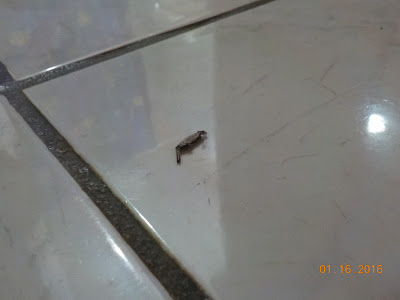January 16-17 (Oh wow I'm really behind on this blog thing. And you don't want to know about my homework...)
A few weekends ago we visited El Milagro de las Plantas (the miracle of plants) in Sololá. It's a small farming co-op that only grows plants native to Guatemala, doesn't use pesticides or chemicals (or anything ending in -cida), and uses traditional Mayan farming methods. Their goal is to be nice to the earth and to provide an alternative to the state health care system. Guatemalan health care is far too expensive for the average campesino, the nearest doctor is most likely located in a far away city, and is not always reliable. Hospitals are understaffed and underfunded, and a few years ago there was some scandal about hospitals using expired medicine. So... unless you're rich, not the best option. El Milagro grows herbs with medicinal uses and makes creams, soaps, teas, and everything else imaginable to sell to their community.
We followed a young man, one of the founders of El Milagro, through the terraced garden on a particularly blazing day. He would pick off part of a plant, explain it's many health benefits, and pass it around for everyone to smell. As soon as we got the Spanish "romero" translated into English "rosemary" in our heads, he had moved onto the next plant and all was forgotten.
He (grr I don't remember his name!) was very passionate about his work, and about sustainable farming practices. He used the word permacultura to describe their practices. "Permanent" not only means sustainable for the earth, but also in the sense that they are sustaining their culture by using traditional practices. They use terraces make watering easier, as well as prevent erosion of the hillside. They plant and harvest according to the lunar calendar, which doesn't make sense from my perspective but is still fascinating. Roots are harvested on a new moon, and flowers or leaves on a full moon. He didn't explain, but I think it's because the liquids in the plants will rise or fall depending on the moon. Like tides? It might be purely of a religious significance and not have any actual effect on the goodness of the harvest, but who knows? Maybe the Mayans were onto something.
Here are some pictures. It's a very pretty farm, except for the dead corn in the background (it's left to seed).

After a bit of standing around in the sun, Katie announced she felt light headed and sat down. Two seconds later she fainted, very gracefully, into a bed of flowers. Our herb-guide shouted "ajo!" (garlic), snatched a piece off a nearby plant, and sprinted over to revive Katie with the strong smell. Her eyes fluttered open immediately. She was fine, she just had to be moved to the shade and be made to drink garlic tea (yuck?). The guide kept the garlic with him, and continued the tour. Not even fifteen minutes later, Grace fainted. She had been very interested in what the guide was saying, and was apologetic about passing out and missing it. Seeing that we were dropping like flies, it was time to end the tour.
We carried on to Panajachel, on Lake Atitlán, which is the most beautiful and most touristy place in Guatemala. We stayed at this hotel and got a lot of mosquito bites:

And there was this really creepy bug in my room and I don't know what it is and I didn't like it!
Now the lake. Atitlán means "beautiful woman" in Cakchiquel, and it certainly is a really really pretty lake. You should seriously go look for professional photos of it, like seriously. It's surrounded by high cliffs and, on the south, three gorgeous volcanoes.
The town, Panajachel, I was not impressed with. It's fullllll of foreign tourists and hippies and vendors. I have never encountered such aggressive salespeople! If you so much as glance at what someone's selling they will follow you, shouting prices at you. And fancier restaurants will hire boys to stand outside and wave menus at people to try to convince them to eat there. It's noticeably pricier than in Xela, of course, but still cheap compared to the U.S. Our host-mom warned us not to buy any souvenirs there because we could find the exact same things for less elsewhere. We did practice our bartering skills, which was a valuable learning experience.
We took a boat across the lake to Santiago, to visit the chapel in memory of Father Stanley Rother. From Oklahoma, he served in Santiago as a priest for 13 years before being murdered by a death squad of the Guatemalan army in 1981. He worked closely with the indigenous people, he even learned their language, Tzutuhil, and was a friend to anybody -- Catholic or not. Well, in the middle of the long civil war, being a friend to the poor and to the indigenous was a dangerous thing to do. He knew he was going to be killed, many in his parish had already been martyred. The church converted the small room in which he was murdered into a chapel. It's a CASP tradition to buy stoles like the one Stanley Rother had and wear them to graduation, so we did that. They are beautiful, woven with multiple colors and cool designs in the indigenous style.
The Don Luises. Don Luis our bus driver, and Don Luis our prof (his real name is Lindy, but that doesn't work in Spanish).
I'll leave you with the volcano San Pedro, because volcanoes are fun and only a little bit scary.









No comments:
Post a Comment